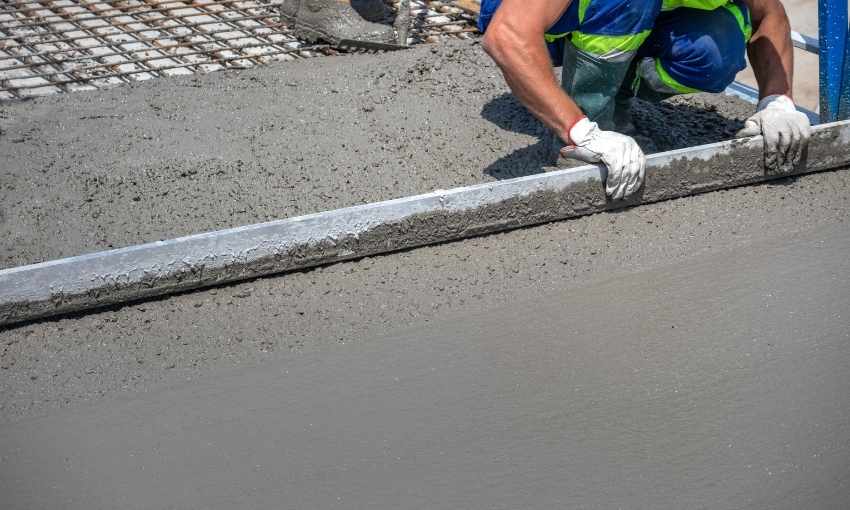Despite the many benefits of concrete, many homeowners are unaware of the challenges that come with it. During the lifetime of the project, you will see cracks, chips, and breaks in the concrete. These problems often result from normal wear and tear; however, an adverse weather pattern can also cause them. Safety reasons dictate that concrete surfaces must be repaired, no matter what the problem may be. Typically, homeowners hire a professional contractor to handle the project because this is not a DIY job. Here you will find all the information related to concrete repairs.
Why does Concrete need Repair?
Broken concrete can cause more than just aesthetically unpleasant appearances. It can be hazardous to entire structures. Consider, for example, driving in a parking garage with cracked concrete. As that crack continues to grow, it will either become an annoying pothole or, even worse, end up putting the customers’ safety at risk.
Moisture is the most destructive force on concrete, which is why it is very important for concrete to be repaired or restored in Fredericton. The more cracked or damaged the concrete, the easier it is for water to seep through and cause even more damage.
You can repair the cracks in concrete before those cause more damage to your property. If you have enough knowledge of masonry repairs, you can repair cracks yourself, but if you want professional work, you can hire your local concrete repairs company to perform this job. Here are the tips to repair small and large cracks in concrete.
Concrete Cracks: Some Reasons
There are a number of factors that can cause concrete cracks, which may help you better protect your concrete surface.
- Concrete cracks most often result from shrinkage. In the initial pour of concrete, the surface does not have a smooth finish. When a mould hardens, it can shrink by an eighth of an inch. This phenomenon can almost never be avoided, even when new surfaces are constructed.
- It is possible for low levels of tensile strength to cause internal tensile stress, which again leads to cracks.
- The possibility of cracks is increased if the concrete is mixed with water in an unequal proportion. A better mix can make the surface more resistant to damages.
- If the sub-grade is not prepared correctly and cured adequately, cracks can develop. As long as the subgrade does not ensure a solid foundation, cracks will occur.
Ways to minimize cracks
There are several ways by following you can prevent cracks in concrete. Some of them are as follows.
- Smaller fine aggregate, higher coarse aggregate content, and low shrinkage aggregate will minimize the water content of the mix.
- If necessary, use calcium chloride admixtures.
- A good “rule-of-thumb” is to space contraction joints according to the wall thickness.
- Consolidate and place concrete properly.
Small concrete cracks
Using a wire brush, remove all loose stones and dirt from the crack. Use a concrete cleaner to wash the crack. Make sure it is made by the same company that makes your patching compound that you get a non-acidic concrete cleaner. A larger amount of muriatic acid is not as safe and convenient as a large amount of water.
Surfaces should be allowed to dry. In the case of a deep crack on a floor, partially fill the crack with sand, leaving about 1/4-1/2 inch of space. Pour crack sealant into the cracks until it reaches the depth of 1/4 inch. Apply another layer the next day after the first one has dried. Reverse the process until the floor and the surface is flush. Patch material must be applied so that the surface is flush with the floor. Don’t overfill. You can use a metal putty knife to smooth caulk.
Large concrete cracks
You can repair the cracks by using a hammer drill to widen the bottom and narrow the top. Holding the patch in place is made easier by this. Ensure all weak or crumbling areas are removed as well. When the crack is deeper than 1/2 inch, you need to bond it using a patch-making company’s bonding adhesive. Before attaching the patch to the glue, let it fully dry. Place a vinyl concrete patch on cracks of up to 1/2 inch depth. Apply a 1/4 inch layer in the crack by mixing according to the instructions on the bag or pail. Whenever you need to apply another layer, let the patch dry for some time before applying another. Finish by troweling the final layer flush with the surface and smoothing it out.
Sand mix can be applied to deeper cracks using the directions on the bag. Fill in all the gaps with the cement by troweling evenly. In the beginning, both deep and shallow crack patches will be glossy and watery. To give the concrete a more uniform texture, use a wooden float after the sheen dries off. You can smooth the surface of the existing concrete with a metal finishing trowel if the concrete is highly smooth.








